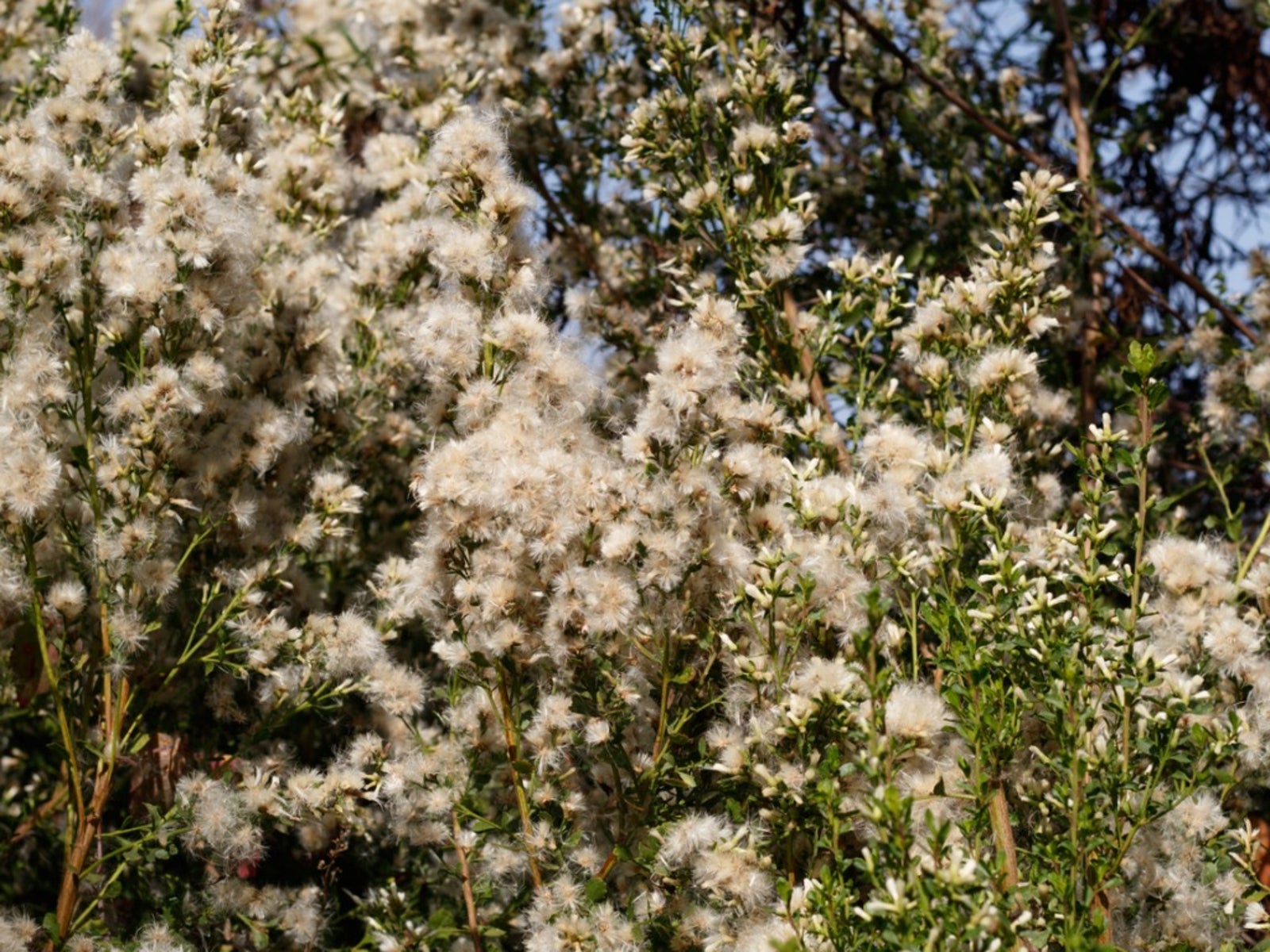What Is A Coyote Bush: Learn About Baccharis Plant Care And Uses


Coyote bush is most likely found in coastal scrub and lowland zones. The scientific name for it is Baccharis pilularis, but the bush is also called chaparral broom. The bush is an important part of chaparral environments, providing food, shelter, and erosion control in scrubby land with few large trees. The amazingly adaptable plant is found in canyons, hillsides, and bluffs. Try growing bush baccharis as part of your natural landscape in parts of Oregon, California, and coastal areas below 2,500 feet (762 m.).
What is a Coyote Bush?
An interesting note about coyote bushes is their close relation to sunflowers. The plant is scraggly and wiry, with stiff branches and small, grayish serrated leaves along the woody stems. An herbaceous perennial, coyote bush has evolved several adaptive strategies to thrive in poor soils with loose vertical soil. It has a wide root system and waxy leaves, which protect it from moisture loss. Chaparral zones frequently experience wildfires to which the plant is equally well adapted. Leaves are coated with a resinous substance that retards fire. In addition, the thick dense roots and stout crown help the plant regenerate after the upper growth has been consumed in a fire. The bush tends to grow in areas with sporadic rainfall and extended dry seasons. It may be a low-growing shrub or an erect tall bush, depending upon its growing conditions. Those that hug hillsides tend to grow low to the ground for protection. Where a site provides shelter, coyote bush looms taller and stretches for sunlight. These bushes can withstand drought, infertile soils, fire, and salt spray. Growing bush baccharis provides erosion control with its wide branching roots and requires little maintenance once established.
Coyote Bush Uses
Baccharis is a native plant and has been used for several purposes by indigenous people. If ingested, the bush does have the ability to cause pregnancy termination. Native people used it as a material for hunting tools, such as arrow shafts. The fluffy female seed heads were part of stuffing for toys and other items. Coyote bush uses also extended to some medicinal therapies, such as using heated leaves to reduce pain and swelling.
Baccharis Plant Care
If you are seeking a natural addition to your landscape or back forty that will require little effort on your part, coyote bushes are right up your alley. Provided soils are moderately to heavily coarse, the plant performs well in a variety of situations. Coyote bush does need a sunny location and frequent watering until it is established. Once the plant is situated, however, you don't need to water it except in the most severe droughts. Trim the bush as needed to keep it from getting too rangy. This is a slow-growing plant with the main gains achieved in spring when temperatures are warm and rains give it a burst of growing moisture. Baccharis plant care is minimal and the bush may reward you in spring with tiny flowers that become cottony, fluffy seeds in fall.
Gardening tips, videos, info and more delivered right to your inbox!
Sign up for the Gardening Know How newsletter today and receive a free copy of our e-book "How to Grow Delicious Tomatoes".

Bonnie Grant is a professional landscaper with a Certification in Urban Gardening. She has been gardening and writing for 15 years. A former professional chef, she has a passion for edible landscaping.
-
 Looking For Plants To Give You The Soft And Fuzzies? Try These 5 Fuzzy Leaf Plant Options
Looking For Plants To Give You The Soft And Fuzzies? Try These 5 Fuzzy Leaf Plant OptionsLovers of texture, drama, silver foliage and tactile plants will adore these special sensory garden additions. These fuzzy leaf plant options will leave you all aglow
By Susan Albert
-
 Get Ready For A Summer Of Hummers! Grow These Full Sun Hummingbird Plants and Flowers
Get Ready For A Summer Of Hummers! Grow These Full Sun Hummingbird Plants and FlowersIf you’re lucky enough to enjoy a sunny backyard, make sure you are maxing out on your pollinator opportunities and grow these full sun hummingbird plants and flowers
By Tonya Barnett